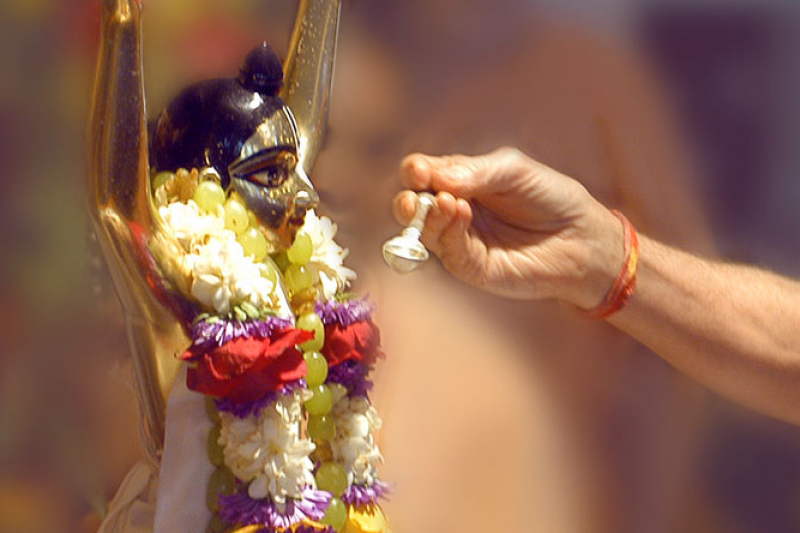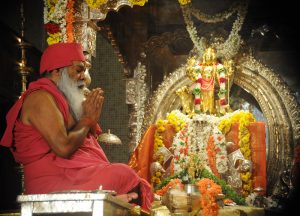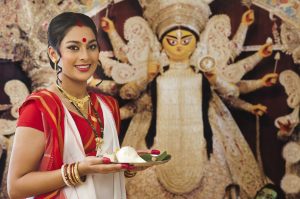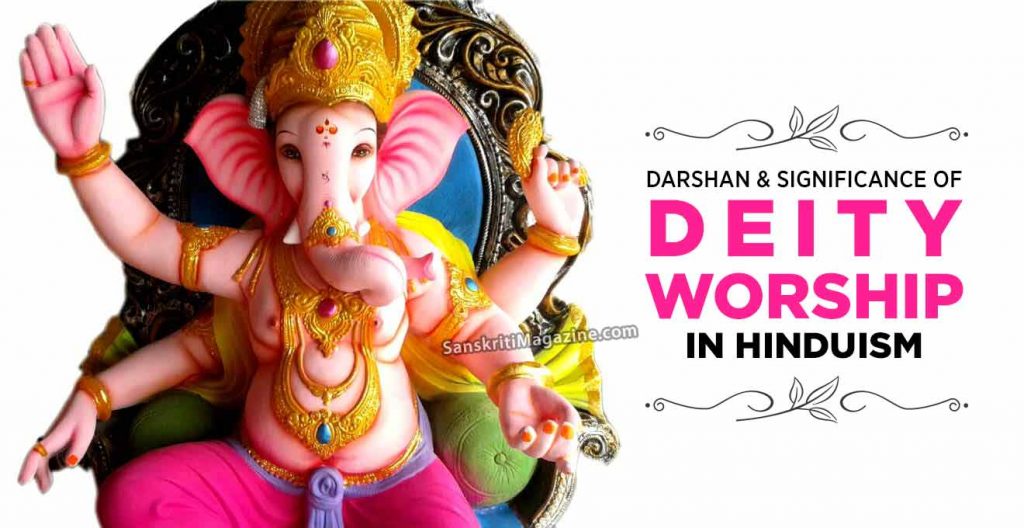By Stephen Knapp
Deities, called murtis in Sanskrit, are an important part of Vedic temples and the Vedic tradition, but what is the significance of Deities and Deity worship? One thing to understand is that all the images of the Deities in the Vedic pantheon, as found in the temples, are made according to explicit details and instructions found in the Vedic texts called Shilpa Shastras. From these instructions we find the means to portray the proper stance, hand gestures, and other factors in the image of the Deity. In this way, Deities are not formed according to whim but in compliance to the scriptural regulations. Then they are installed in the temple in an elaborate ceremony known as Prana-pratishta, wherein the divine personalities are called to appear in the form of the Deity. Some of the Deities are demigods, while others, such as Krishna, Vishnu, Ramachandra, are of the Vishnu-tattva or Supreme Being.
Some people, however, do not believe that God has a form. But many verses in the Puranas and, particularly, the Brahma-samhita establish that the Supreme Being does have a specific form. These texts also describe His variegated features, which include His spiritual shape, characteristics, beauty, strength, intelligence, activities, etc. Therefore, it is considered that the authorized Deities of the Supreme that are shaped according to these descriptions provide a view of the personal form of God.

Those who have no knowledge of God or His form will certainly consider the temple Deities as idols. But this is the effect of their foolishness. They think that the Deities are simply the products of someone’s imagination. Of course, there are those who say that God has no form, spiritual or material, or that there is no Supreme Being. Others think that since God must be formless, they can imagine or worship any material form as God, or they regard any image as merely an external manifestation of the Supreme. But images of the demigods are not additional forms or representations of an impersonal God, nor are they equal to God. All such people who think in the above mentioned ways have resorted to their own imagination to reach such conclusions and are, therefore, idolaters. The imaginary images and opinions of God that are formed by those who have not properly learned about, seen, or realized God are indeed idols, and those who accept such images or opinions are certainly idolaters. This is because these images or opinions are based on ignorance and are not a likeness of His form.
Nonetheless, God is described in the Vedic literature, which explains that God is sat-chit-ananda vigraha, or the form of complete spiritual essence, full of eternity, knowledge, and bliss, and is not material in any way. His body, soul, form, qualities, names, pastimes, etc., are all nondifferent and are of the same spiritual quality. This form of God is not an idol designed from someone’s imagination, but is the true form, even if He should descend into this material creation. And since the spiritual nature of God is absolute, He is nondifferent from His name. Thus, the name Krishna is an avatara or incarnation of Krishna in the form of sound. Similarly, His form in the temple is not merely a representation, but is also qualitatively the same as Krishna as the archa-vigraha, or the worshipable form.

Some people may question that if the Deity is made from material elements, such as stone, marble, metal, wood, or paint, how can it be the spiritual form of God? The answer is given that since God is the source of all material and spiritual energies, material elements are also a form of God. Therefore, God can manifest as the Deity in the temple, though made of stone or other elements, since He can transform what is spiritual into material energy, and material energy back into spiritual energy. Thus, the Deity can easily be accepted as the Supreme since He can appear in any element as He chooses, whether it be stone, marble, wood, gold, silver, or paint on canvas. In this way, even though we may be unqualified to see God, who is beyond the perceptibility of our material senses, the living beings in this material creation are allowed to see and approach the Supreme through His archa-vigraha form as the worshipable Deity in the temple. This is considered His causeless mercy on the materially conditioned living beings that He would allow Himself to appear to humanity as a Deity to accept our worship and service.
 In this manner, the Supreme Being gives Himself to His devotees so they can become absorbed in serving, remembering and meditating on Him. Thus, the Supreme comes to dwell in the temple to accept our worship and attract the eyes to concentrate and meditate on the Deity, and the temple becomes the spiritual abode on earth. In time, the body, mind and senses of the devotee become spiritualized by serving the Deity, and the Supreme becomes fully manifest to him or her. Worshiping the Deity of the Supreme and using one’s senses in the process of bhakti-yoga, devotional service to the Supreme, provides a means for one’s true essential spiritual nature to unfold. The devotee becomes spiritually realized and the Deity reveals His spiritual nature to the sincere souls according to their evolutionary spiritual development. This can continue to the level in which the Supreme Being in the form of the Deity engages in a personal relationship and performs reciprocal, loving pastimes with the devotee, as has previously taken place with other advanced individuals.
In this manner, the Supreme Being gives Himself to His devotees so they can become absorbed in serving, remembering and meditating on Him. Thus, the Supreme comes to dwell in the temple to accept our worship and attract the eyes to concentrate and meditate on the Deity, and the temple becomes the spiritual abode on earth. In time, the body, mind and senses of the devotee become spiritualized by serving the Deity, and the Supreme becomes fully manifest to him or her. Worshiping the Deity of the Supreme and using one’s senses in the process of bhakti-yoga, devotional service to the Supreme, provides a means for one’s true essential spiritual nature to unfold. The devotee becomes spiritually realized and the Deity reveals His spiritual nature to the sincere souls according to their evolutionary spiritual development. This can continue to the level in which the Supreme Being in the form of the Deity engages in a personal relationship and performs reciprocal, loving pastimes with the devotee, as has previously taken place with other advanced individuals.
At this stage, darshan is not simply a matter of viewing the Deity in the temple, but to one who is spiritually realized it is a matter of experiencing the Deity and entering into a personal, reciprocal exchange with the Supreme Personality in the form of the Deity. At that stage, you may view the Deity, but the Deity also gazes at you, and then there is a spiritual exchange wherein the Deity begins to reveal His personality to you. This is what separates those who are experienced from those who are not, or those who can delve into this spiritual exchange and those who may still be trying to figure it out. For those who have experienced such an exchange with the Supreme or His Deity, at this stage the worship of the Supreme Being in the Deity moves up to a whole different level, with no limits as to the spiritual love that can be shared between the devotee and the Deity. This also opens up a completely new level of conversation on this topic, which we can save for another time. But this is why the deity in the temple is the main focal point of everything that goes on there.











